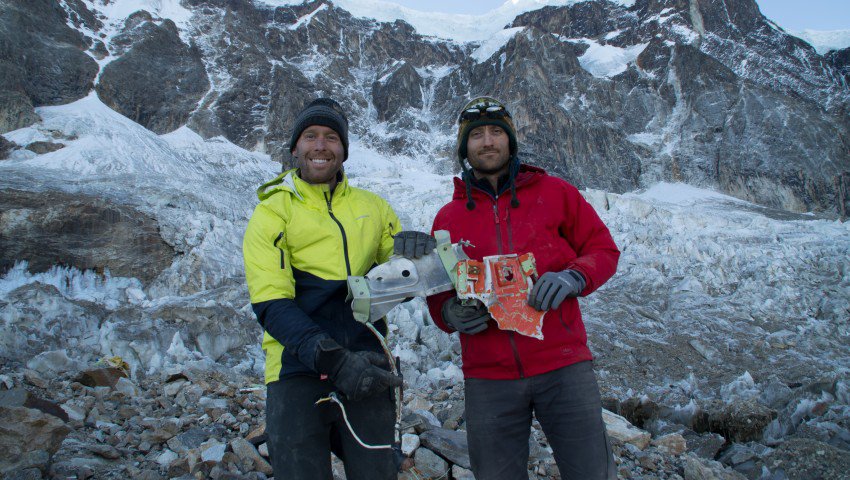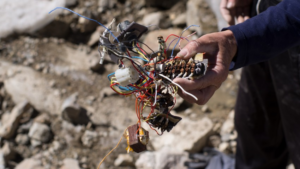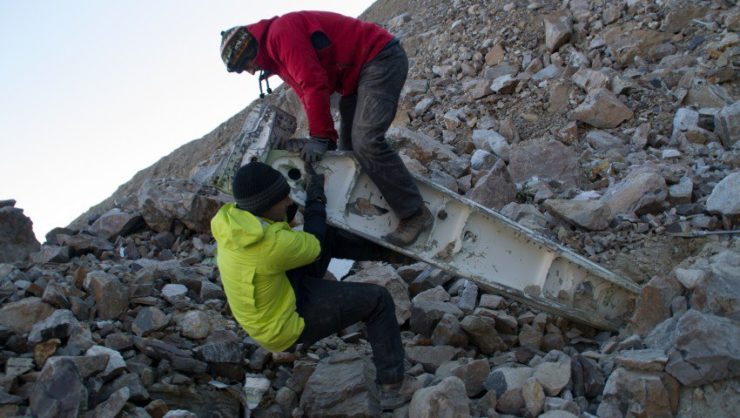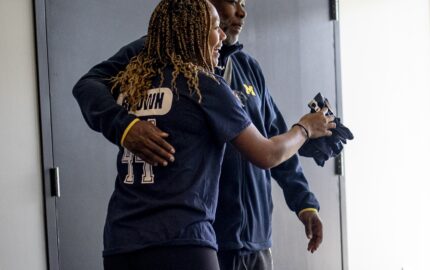Thirty years ago, a plane took off in Paraguay and smashed into a mountain in Bolivia. In the decades since, the accident left secrets trapped – and conspiracy theories festering – at the frozen heights of South America.
Then Outside Magazine's Peter Frick-Wright heard about two American adventurers, Dan Futrell and Isaac Stoner, who were determined to solve the mystery of the crash. The pair, he says, “had no sponsorships, benefactors, or Kickstarter funding—just a crazy plan, a bit of money in the bank, and two weeks’ vacation.”
"The plane crashed in a huge snowstorm, and once it was buried, the wreckage was basically gone. If anyone had gone looking, there wouldn't have been anything to find until that glacier melted."
And so began a remarkable journey that saw Frick-Wright join the two men in making the 20,000-foot ascent to a melting glacier field, battling altitude sickness and wildly swinging emotions on the way to the crash site.
The resulting story, “What Happened to Eastern Airlines Flight 980?” is a testament to the power of careful on-the-scene reporting, the marvel of nature, the lure of mystery and the resilience of the human spirit. In other words, these three guys climb to the top of one of the tallest mountains in the world, make some discoveries that actually ease the minds of family members of the victims, and we get to go along for the ride.
It's breathtaking to tag along with three strangers on such an adventure, a kind of Sherlock Holmes meets “Into Thin Air,” but the story is deeper than that: We also see – and feel -- their varied human reactions to the physical challenges they confront and, yes, the remains they wade through. To find out more, I spoke to Peter from São Paulo, Brazil, about the journey and where it's still leading.

I want to start with your involvement. Early in the story, you quickly mention that a friend of a friend contacted you, and then -- BAM -- you're going on this crazy expedition through flesh and wreckage. How does that happen? Where were you when you got word, and how were you in a position to take off and go?
I think I was mentally signed up to go with Dan and Isaac within a few hours of first hearing about their trip. They had read one of my other articles, so they were happy to have me along, and then the set-up to the story was so compelling that the pitch just sort of wrote itself. My editor actually called me as soon as I sent it and asked, "How do you get these fully formed stories to fall perfectly into your lap?"
From there it was a matter of figuring out the scheduling. I was in the middle of producing a bunch of episodes of Outside's podcast, and so I just had to come up with a plan for how those were still going to get done while I was in Bolivia.
Was it at all intimidating to be going along with two guys who clearly relish difficulty, or is this something you are used to? I mean, altitude sickness is real. I'm fairly athletic but just climbing one flights of stairs in Quito -- which is not nearly as high as where you went -- makes me dizzy.
It was a little intimidating. Dan and Isaac are in serious shape, and maybe a week after we'd first talked on the phone and decided to do this trip together, they texted to let me know that they'd discussed contingency plans and decided that if things got bad I would be eaten first.
They were joking, but I think it spoke to something real on the trip -- the only way this thing was going to fail is if someone got serious altitude sickness and we had to leave the search field earlier than planned.
I felt like I could keep from embarrassing myself athletically, but the more I learned about altitude, the more I realized that your performance at altitude is a combination of preparation and luck. There was no predicting how we'd do. Turns out that I sucked wind the first few days and got continually stronger, Dan started out really strong and slowly wore down. (Isaac was pretty consistent throughout.)
It seems it would have been an insane experience even if you had found nothing. But of course, you did. What was it like to come across body parts? Did that change the atmosphere among the group, or was the focus still on physically making it through?
The group was constantly swinging through various emotions and not being quite sure what we should feel, and when. It was a horrible, tragic thing that happened, but it was also a lot of fun to investigate.
I tried to explore the tension between those two things in the audio version of the story--you can hear them processing things as they're discovering bone fragments and other human remains--but I don't think I can say exactly what it was like other than that we were constantly trying to figure out how to be respectful while maintaining our sanity. There was a lot of gallows humor.

Yes, the gallows humor comes through. I find that kind of a response is more common down here in Latin America -- where violence is so widespread -- than the U.S. What was the reaction of the Bolivians who were with you? And what language were you communicating in, by the way?
We were communicating in English since none of us speak Spanish, but we had an Aymara guide with us that we couldn't talk to other than through our German mountain guide, Robert Rauch.
I think they were even more removed from the emotional impact of the crash, but I'm not sure. They hadn't been in touch with the family members of the folks who died up there, and no one had anything riding on this expedition. If anything, we were a pretty cushy gig ‘cause all we wanted to do was go hike back and forth on a glacier.
You made a couple of discoveries up there, most obviously, the flight recorder. But first, the snakeskins -- have you managed to find out more about this? Was there a large snakeskin-smuggling operation from South America in the 1980s? Does it still exist?
We've only gotten access to this in broad strokes. But yes, there was a large snakeskin-smuggling operation in the 1980s, particularly from Paraguay to the US. The illegal trade of Caiman (alligator) skins hit its peak in 1985, but then it took a nosedive in ‘86 or ‘87. Partly this is because of a couple of major busts that made the problem more visible.
It's hard to overstate just how many reptile skins were up there among the wreckage though.
How many?
Thousands. As many skins as there were plane parts, in some places. One per meter?
Just loose, or packaged?
Loose, fluttering in the wind. They'd crumble in your hand.
So you were wandering around in the sky in a sea of decomposing human and reptile corpses.
Yes, except nothing was decomposing. It was all incredibly well-preserved from ice and altitude. There weren't even any bugs up that high.
"Dan and Isaac are in serious shape, and maybe a week after we'd first talked on the phone and decided to do this trip together, they texted to let me know that they'd discussed contingency plans and decided that if things got bad I would be eaten first."
I'm not sure if you're aware, but Paraguay is still seen down here -- sometimes fairly, sometimes not -- as a huge source of smuggling and strange political history. Did you find any evidence at all to support any of the myriad conspiracy theories?
The alligator/snake skins were the only thing we found that seemed in any way shady. Everything else is just circumstantial.
And the cockpit recorder -- where is it now? Has anyone listened to it?
The cockpit voice recorder is still in Boston, and Dan and Isaac are waiting to get permission from Bolivia to hand it over to the NTSB. At the moment, the chances of that look medium. I got a phone call last week to say that Bolivia has acknowledged the existence of the magnetic tape that we found. So things are happening. Slowly.
Could you simply just listen to it? Plug it into some kind of a device? Or would that be extremely illegal?
The voice recorder is completely smashed. It is now extremely important, very interesting scrap metal.
We did find some magnetic tape that looks like it might have come from inside the flight recorder, but there's no way to know. None of the experts we reached out to would talk to us until the legal stuff was sorted out.
Were there any ethical concerns about interacting with the site? The group clearly touched things; there are even some photos of them holding up wreckage.
We were concerned about interacting with any human remains that we found, but didn't even think about causing any problems by looking through or touching the aircraft wreckage. At the time we had no indication that anyone else would ever take an interest in the crash, and the plane parts had already fallen down a cliff and been swirled through the inside of a glacier. We weren't going to do any damage that hadn't already been done.
As far as the human remains, without being able to identify each person, the best we could do is to bury each one where we found it and mark the spot. We've had a couple of families reach out and thank us for doing so. One even requested the GPS coordinates, just so they could look at the spot on a map.
Would you have had to approach the wreckage in any different way if this had been in the United States?
Given the same situation in the U.S., I don't think we would have approached the wreckage any differently. A plane that's been down 30 years in a difficult-to-reach location without any follow-up isn't screaming to be treated delicately. If we were looking for a plane that had gone down in Alaska, I think we would have treated it the same way—like a puzzle to be solved.
So, did the story generate any other reaction among relatives?
Yeah, it did. There were so few answers back in 1985, people are really glad to have some sort of new information, even if we aren't able to tell them exactly why the plane crashed into the mountain.
Isaac and Dan got a lot of emails and phone calls from people who just wanted to tell them about their friend or family member. It's a profoundly understandable impulse.
I know you'd be guessing, but what's your personal theory for why, in 31 years, no one could do what you could in a few weeks? You seemed especially fit, perhaps lucky, but you’d think that some kind of a serious attempt would have succeeded in all that time, no?
That's actually one of the things I didn't understand until I spent some time up in the debris field. It's not like the flight recorders have been sitting up there for 30 years waiting to be found. The plane crashed in a huge snowstorm, and once it was buried, the wreckage was basically gone. If anyone had gone looking, there wouldn't have been anything to find until that glacier melted.
My best guess is that the flight recorders have been out of the ice for a year, maybe two. So we got lucky in several ways.



